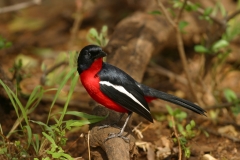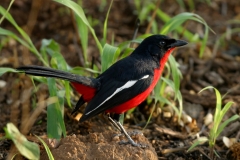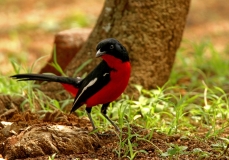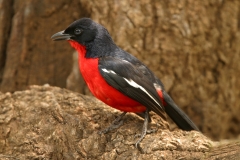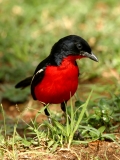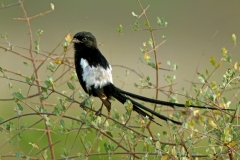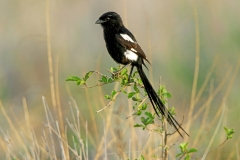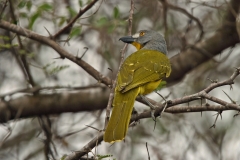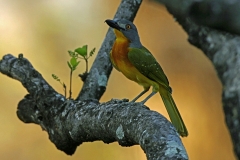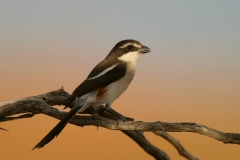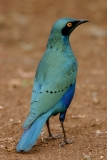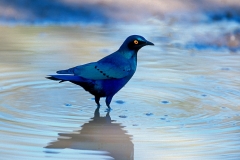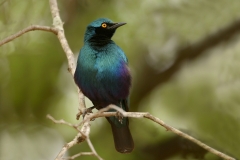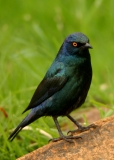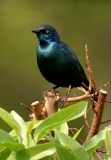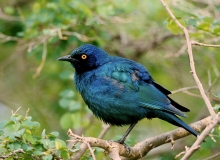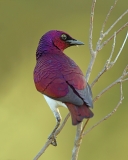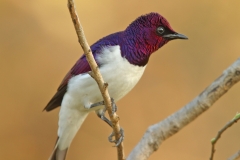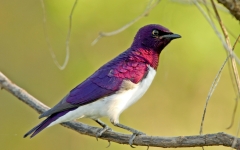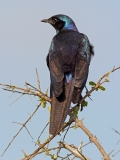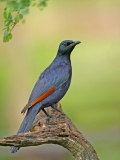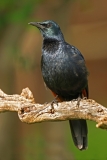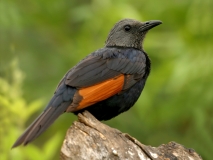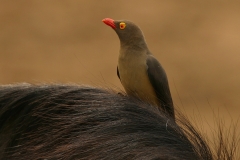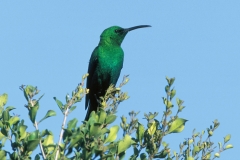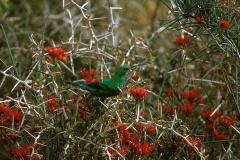African Shrikes, Starlings, Oxpeckers & Sunbirds
Africa has the most diverse group of shrikes, starlings, oxpeckers and sunbirds in the world. Their images are well represented in this gallery.
There are shrikes and there are bush-shrikes. The crimson-breasted shrike is a stunning bird that needs no further elaboration. Some shrike species are shy and skulking, others are gregarious in groups of four to eight. We witnessed this group activity with the Magpie Shrike in Kruger National Park. All hunt prey from perches, and several perform aerial displays as they vocalize their songs and calls.
To North Americans, starlings are considered a “trash” bird, occurring in unwanted numbers that displace more desired birds. In Africa, starlings are some of the most stunning birds around. Many are iridescent blue, green or purple-blue. The most memorable of starlings we photographed was the Violet-backed Starling. Even the red-winged starlings was a satisfying photo subject. There were pied starlings and even waddled starlings. We did see the European starling too, but we hardly paid it any attention. Experiencing Africa’s starlings forever changed our feelings about that group of birds.
There is not another type of bird in Africa with a more interesting job location than that of the oxpeckers. We have photographed them in the nostrils of the white rhinocerous, aligned along the neck of a giraffe, adorning the opposite ears of a warthog, and freely working over the hide of wildebeasts, black rhinos and African buffalo. Interestingly, we never saw one free-riding on the back of an elephant. It is assumed that the elephant’s skin is too sensitive to tolerate the ticklish picking of parasite from its skin. There are two oxpeckers in the areas we visited, the red-billed and the yellow-billed oxpeckers. We primarily saw the red-billed oxpeckers in reserves with the large grazing mammals, and the yellow-billed was seen only in the far northern reach of Kruger National Park.
